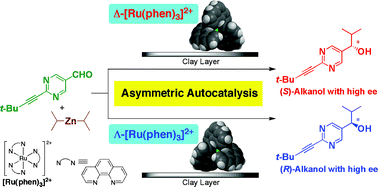Highly enantioselective asymmetric autocatalysis using chiral ruthenium complex-ion-exchanged synthetic hectorite as a chiral initiator†
Abstract
The synthetic hectorite containing intercalated chiral Δ- and Λ-tris(1,10-phenanthroline)ruthenium(II) ions acts as a heterogeneous chiral


 Please wait while we load your content...
Please wait while we load your content...